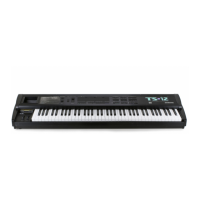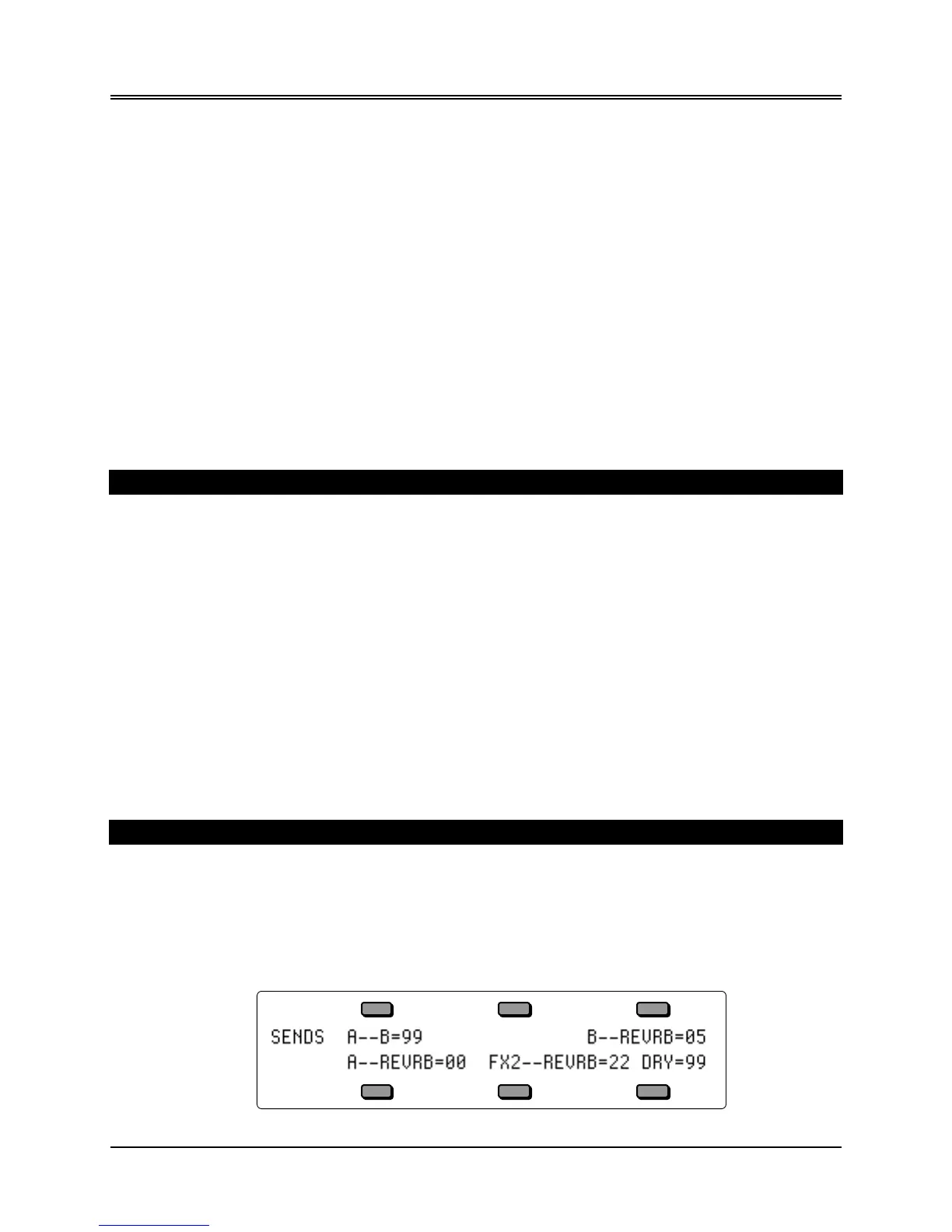Section 7 — Effect Parameters
1
This section offers detailed descriptions of the sub-pages and parameters used in selecting,
creating, and editing effects. For a basic overview of the concepts involved, refer to the previous
section.
About Effect Parameters
The effect algorithms (shown in reverse type) described in this section have various sub-pages.
Sub-pages are a group of parameters associated with the effect algorithm. Some of the
parameters are common to many effect algorithms and some are specific to a particular effect
algorithm. The first sub-page of parameters is almost identical for all of the algorithms. It
contains the name of the effect algorithm and variations of this algorithm. The remaining sub-
pages are variable and contain specific parameters that are relevant only to that effect. All of
these parameters are programmable and can be used to customize each effect algorithm.
Effect Modulation Parameters
The Effect Modulation parameters are identical for all the algorithms, and are explained in detail
in Section 6 — Effect Concepts.
00 DRY/BYPASSED
This utility algorithm routes FX-1 and FX-2 permanently dry without any effects processing. This is
useful when you want to hear a sound without any effects coloration.
MIX FX-1 and FX-2 Ranges: 00 to 99
These parameters control the mix of silence with a dry audio signal. The FX-1 and FX-2
parameters can be assigned different levels, and used as volume mix controllers for each track in
a preset, sequence, or song. 00 is silent and 99 is full volume. By assigning the modulation
controllers to these parameters, you can change volume mixes of the tracks in real-time.
Parallel Effects
The first 21 algorithms in the TS-12 are called “parallel effects” and allow several effect types to
be used at the same time. These algorithms can be very useful in Presets and Sequencer mode,
where you would like different effects processing for each track. The key to parallel effects is
how the voices are routed and how they are panned (on the Output page). Many of the parallel
effect parameters are identical, and are described the first time they appear.
01 DDL+CHORUS+REV
This parallel effect combines a digital delay with a chorus and a plate reverb. The second sub-
page (not user-programmable) shows how this parallel effect is routed:
• Voices assigned to FX1 (and panned left) are sent to Effect A (DDL)
• Voices assigned to FX1 (and panned right) are sent to Effect B (CHORUS)
• Voices assigned to FX2 are sent to a plate reverb (REV)
For more information about parallel effects routing, refer to the previous section.

